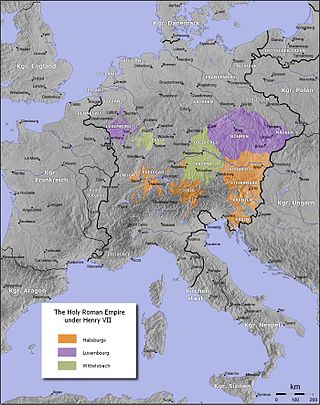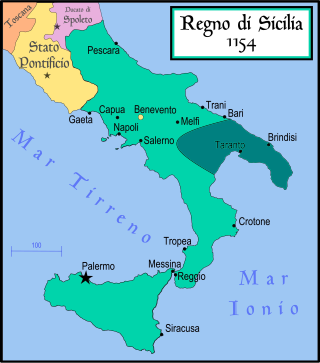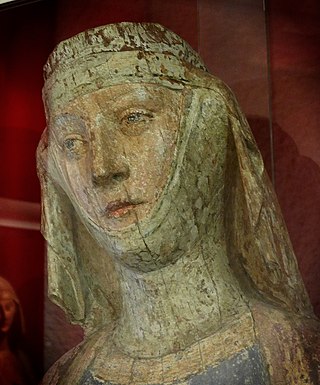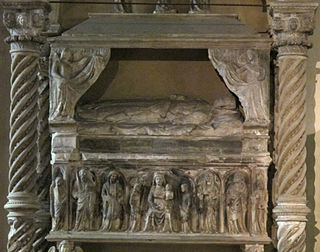The 1380s was a decade of the Julian Calendar which began on January 1, 1380, and ended on December 31, 1389.
The 1360s was a decade of the Julian Calendar which began on January 1, 1360, and ended on December 31, 1369.

Year 1313 (MCCCXIII) was a common year starting on Monday of the Julian calendar.
The 1390s was a decade of the Julian Calendar which began on January 1, 1390, and ended on December 31, 1399.
The 1370s was a decade of the Julian Calendar which began on January 1, 1370, and ended on December 31, 1379.
The 1330s was a decade of the Julian Calendar which began on January 1, 1330, and ended on December 31, 1339.
Year 1385 (MCCCLXXXV) was a common year starting on Sunday of the Julian calendar.
Year 1386 (MCCCLXXXVI) was a common year starting on Monday of the Julian calendar.

The House of Savoy is a royal dynasty that was established in 1003 in the historical Savoy region. Through gradual expansion, the family grew in power from ruling a small Alpine county north-west of Italy to absolute rule of the Kingdom of Sicily from 1713 to 1720, when they were handed the island of Sardinia, over which they would exercise direct rule from then onward.

The Principality of Achaea or Principality of Morea was one of the vassal states of the Latin Empire, which replaced the Byzantine Empire after the capture of Constantinople during the Fourth Crusade. It became a vassal of the Kingdom of Thessalonica, along with the Duchy of Athens, until Thessalonica was captured by Theodore, the despot of Epirus, in 1224. After this, Achaea became for a while the dominant power in Greece.

Philip I of Taranto, of the Angevin house, was titular Latin Emperor of Constantinople by right of his wife Catherine of Valois–Courtenay, Despot of Romania, King of Albania, Prince of Achaea and Taranto.

Philip II of the Angevin house, was Prince of Achaea and Taranto, and titular Latin Emperor of Constantinople from 1364 to his death in 1373.

The Principality of Taranto was a state in southern Italy created in 1088 for Bohemond I, eldest son of Robert Guiscard, as part of the peace between him and his younger brother Roger Borsa after a dispute over the succession to the Duchy of Apulia.
James of Baux or James of Les Baux was the Latin Emperor of Constantinople from 1374 to 1383. He was the last Latin emperor to govern any imperial territory.

Catherine II, also Catherine of Valois or Catherine of Taranto, was the recognised Latin Empress of Constantinople from 1307–1346, although she lived in exile and only had authority over Crusader States in Greece. She was Princess consort of Achaea and Taranto, and also regent of Achaea from 1332–1341, and Governor of Cephalonia from 1341–1346.
James was the Lord of Piedmont from 1334 to his death. He was the eldest son of Philip I and Catherine de la Tour du Pin. While his father had abandoned his claim to the Principality of Achaea in 1307, James continued to use the princely title and even passed it on to his successors.

The Capetian House of Anjou, or House of Anjou-Sicily, was a royal house and cadet branch of the direct French House of Capet, part of the Capetian dynasty. It is one of three separate royal houses referred to as Angevin, meaning "from Anjou" in France. Founded by Charles I of Anjou, the youngest son of Louis VIII of France, the Capetian king first ruled the Kingdom of Sicily during the 13th century. The War of the Sicilian Vespers later forced him out of the island of Sicily, which left him with the southern half of the Italian Peninsula, the Kingdom of Naples. The house and its various branches would go on to influence much of the history of Southern and Central Europe during the Middle Ages until it became extinct in 1435.

Maria of Calabria, Countess of Alba, was a Neapolitan princess of the Capetian House of Anjou whose descendants inherited the crown of Naples following the death of her older sister, Queen Joanna I.
Francis of Baux was the first Duke of Andria, Count of Montescaglioso and Squillace, and Lord of Berre, Mison, and Tiano. He was the son of Bertrand III of Baux, Count of Andria and Montescaglioso and his second wife, Marguerite d'Aulnay. Francis's father was a Senator of Rome, Captain General of Tuscany, and Justiciar of Naples. The half-royal Baux family was one of the greatest families of the kingdom after the Duke's marriage to Marguerite of Taranto in 1348.








